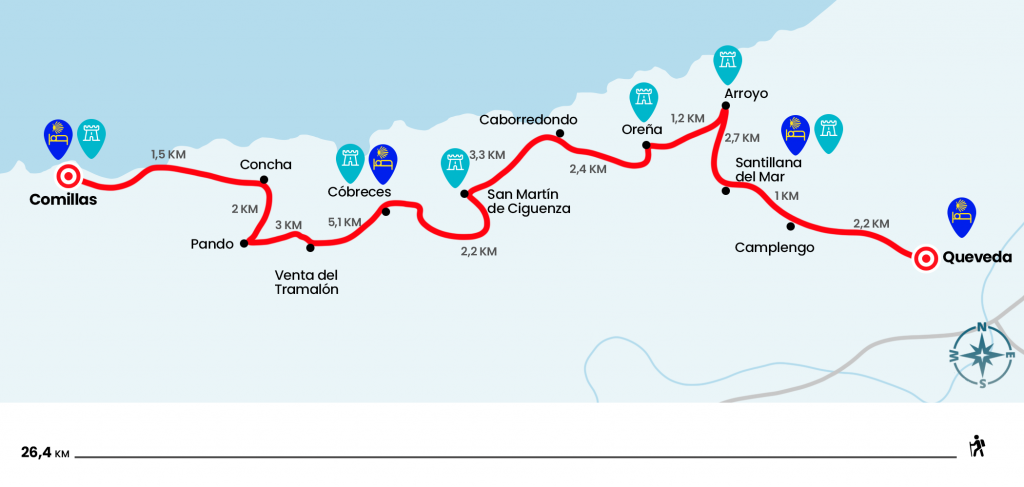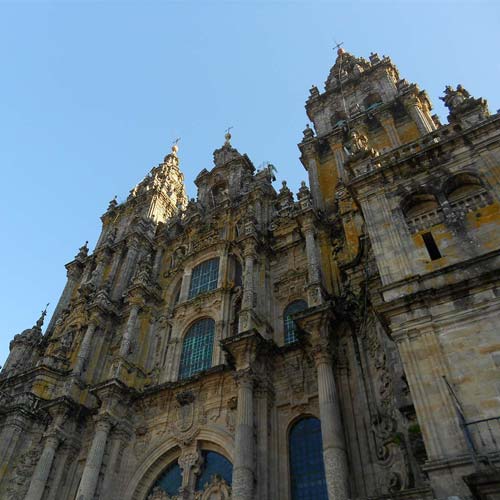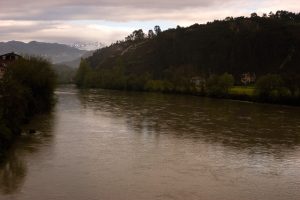Article translated by an automatic translation system. Press here for further information.
Queveda to Comillas stage
Before the campsite there is a nice view of Santillana. Enjoy it!
Information about the stage 15: Queveda to Comillas stage

Enlarge map
Points of interest in the stage 15: Queveda to Comillas stage
The route
If we want to visit Santillana del Mar we will have to leave early from the hostel and go to Camplengo, where after a detour to the right we will go down to meet the lateral facade of the Collegiate of Santa Juliana. This ancient monastery was the origin of Santillana del Mar, a villa that was declared Artistic Historical Complex in 1943. We could spend the whole day visiting museums and streets between palaces and manor houses, as the town deserves it. The absence, no longer of painted arrows, but also of stone shells compel us to imagine the march. The exit departs from the Plaza de Ramón Pelayo, where the City Hall is, to line the street of the Ovens.
Before you reach the campsite there is a nice view of Santillana surrounded in part by a large meadow. We go now to the nearby Arroyo to which we enter after passing a local road. The hermitage on the hillside must be left to descend by a cement trolley to Oreña. So we enter the municipality of Mat de Lloredo. Coming to the town we will see in the distance the church of San Pedro which is shown as a watchtower on the high. We will go to her and leave this 16th-century temple to descend to Caborredondo. We crossed it by road, we passed over the CA-131 and when we reached a house with the name La Solana we turned to the right to, along with maizales, reach the imposing stamp of the church of San Martin de Cigonzalo. The temple was built in the middle of the 18th century according to the designs of the Indian Juan Antonio de Tagle and was declared a good of cultural interest in 1992.
After contemplating San Martín we continue to Novales, the capital of the municipality - it is easy not to enter it because before there is a turn that snaps and goes up to CA-356 towards Cóbreces-. Novales is famous for their orange and lemon plantations that grow thanks to a special microclimate that occurs in this area. Already in the time of the Empire the Romans loaded their ships with these citrus fruits.
Leaving this Mediterranean atmosphere, you get on the road you enter Cóbreles. It is best to continue for it, as the signage forces to get into the village and take a big turn to return to the road at the height of the Church of San Pedro. The church, completed in 1910, has a characteristic red color and is inspired by examples of Romanesque and French Gothic. Next to the Cistercian Abbey of Viaceli, of which it is ad link, it forms the two signs of landscape identity of Cóbreces.
The day continues next to the church and finally gives us a relaxing stretch between a oak forest and you may be drunk. It is worth enjoying it because we are once again headed back to an asphalt track and to the CA-131 at the height of the Sale of the Tramalon where more than one has had to take refuge from the rain under the roof. Several roads and more roads lead to La Iglesia, a town of about 150 inhabitants that holds the capital of the municipality of Ruiloba. Then there will come Pando, where there is a convent of the Barefoot Carmelite of the 18th century, and later Concha. So we left the nuclei of Ruiloba and headed to our end at Comillas. Just a kilometer and a half to enter the village and delight us with the view of the Cantabrian.
The difficulties
Remarks
In images
What to see, what to do
The hostels

¿Do you want to send any photo of "The Camino de Santiago"?
If you have any photos of "El Camino de Santiago" that you want to share with us, you can send them to us and enlarge the photo gallery


Forum: What pilgrims think about the Camino de Santiago
See all